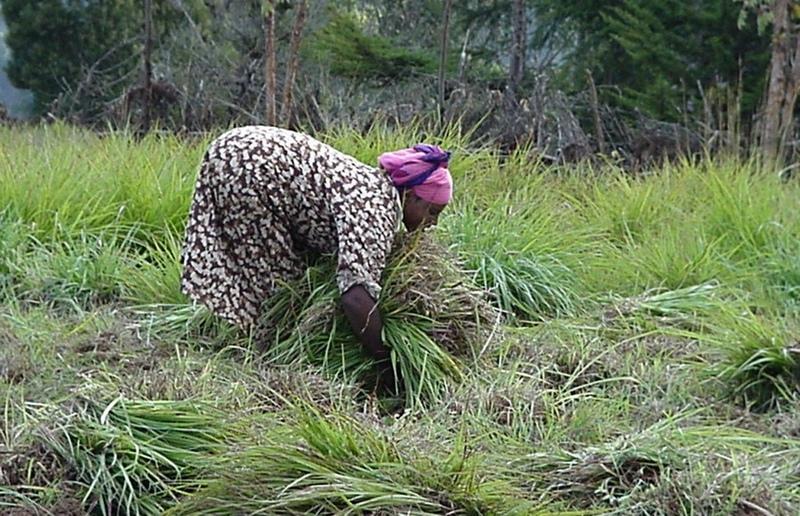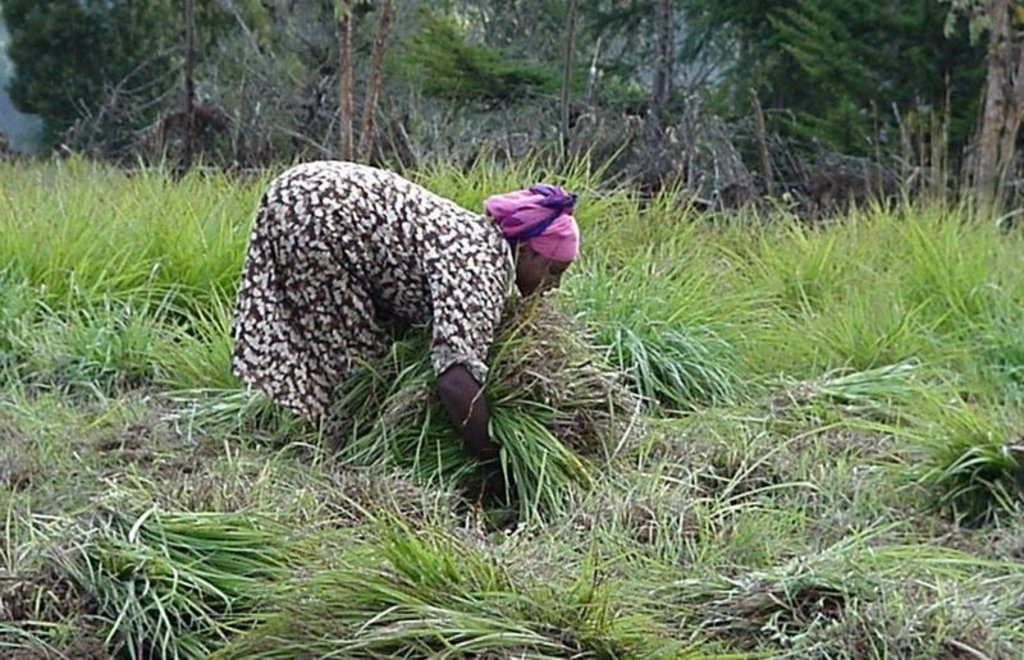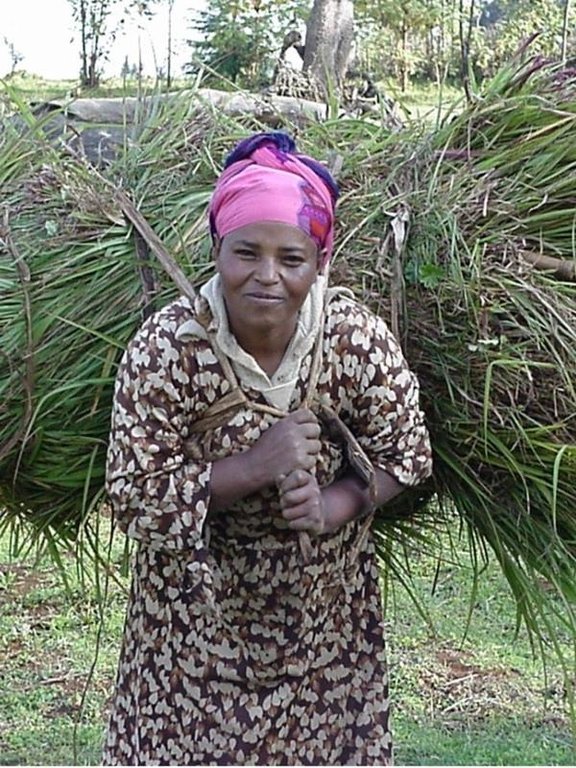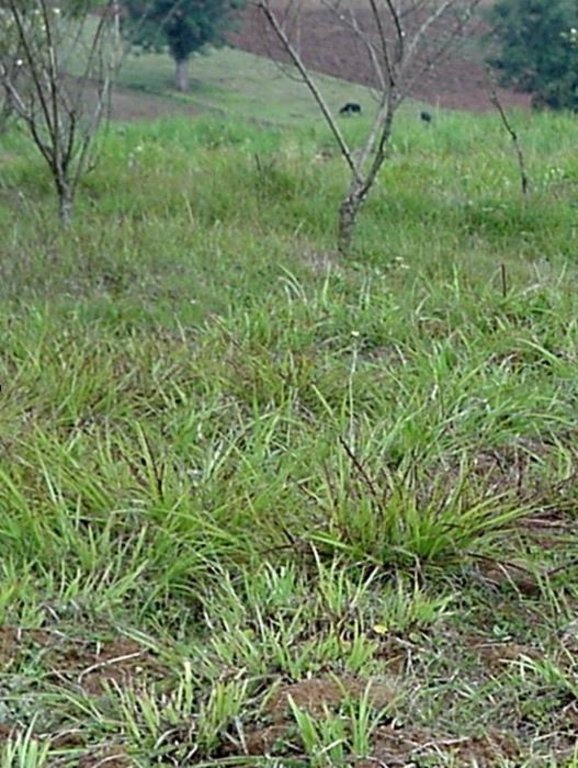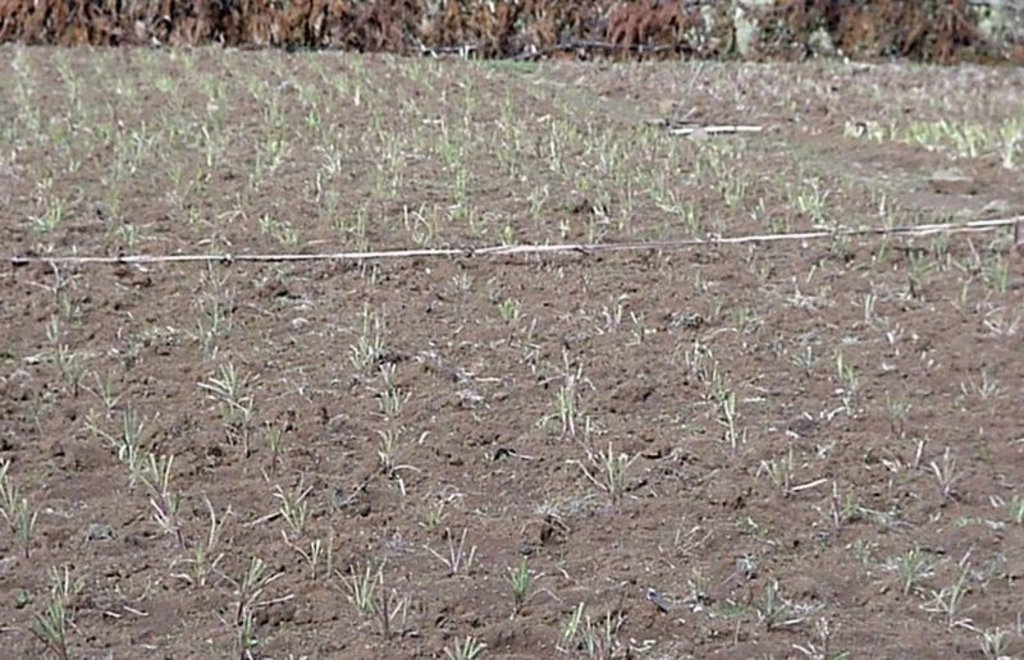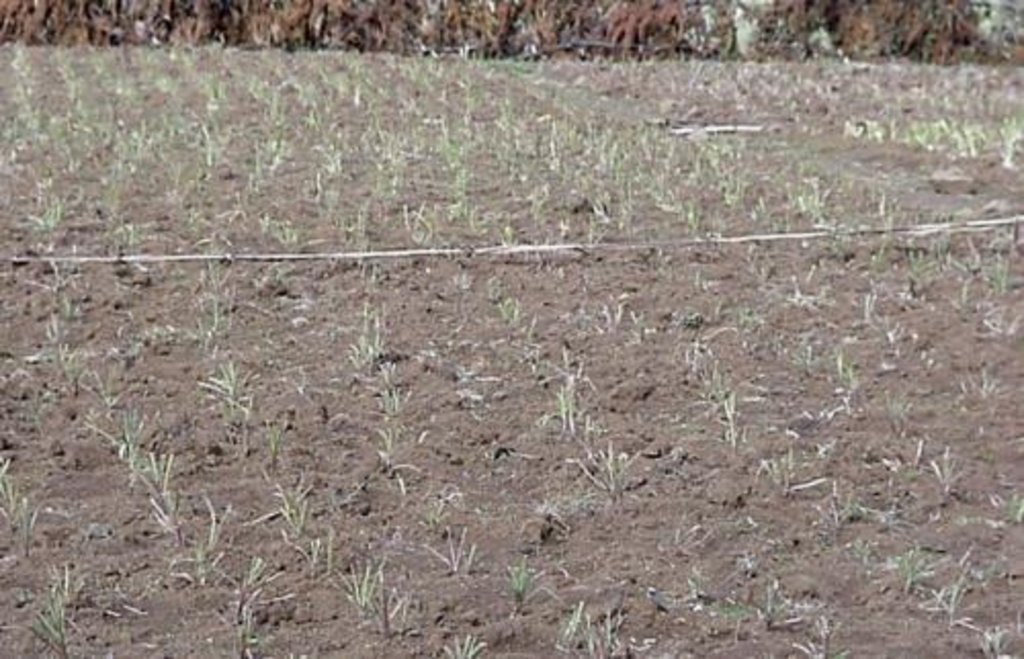Improved grazing land management [Etiópia]
- Criação:
- Atualização:
- Compilador/a: Daniel Danano
- Editor: –
- Revisor: Fabian Ottiger
Gitosh masheshal
technologies_1049 - Etiópia
Veja as seções
Expandir tudo Recolher tudo1. Informação geral
1.2 Detalhes do contato das pessoas capacitadas e instituições envolvidas na avaliação e documentação da tecnologia
Nome do projeto que facilitou a documentação/avaliação da Tecnologia (se relevante)
Book project: where the land is greener - Case Studies and Analysis of Soil and Water Conservation Initiatives Worldwide (where the land is greener)Nome da(s) instituição(ões) que facilitou(ram) a documentação/ avaliação da Tecnologia (se relevante)
Food and Agriculture Organization of the United Nations (FAO) - ItáliaNome da(s) instituição(ões) que facilitou(ram) a documentação/ avaliação da Tecnologia (se relevante)
Ministry of Agriculture and Rural Development of Ethiopia (Ministry of Agriculture and Rural Development) - Etiópia1.3 Condições em relação ao uso da informação documentada através de WOCAT
Quando os dados foram compilados (no campo)?
01/07/2003
O/a compilador/a e a(s) pessoa(s) capacitada(s) aceitam as condições relativas ao uso de dados documentados através da WOCAT:
Sim
2. Descrição da tecnologia de GST
2.1 Descrição curta da tecnologia
Definição da tecnologia:
Rehabilitation of communal grazing lands, through planting of improved grass and fodder trees and land subdivision, to improve fodder and consequently livestock production.
2.2 Descrição detalhada da tecnologia
Descrição:
This case study focuses on the highly populated, humid highland regions of Ethiopia that experience serious shortages of pasture. Due to rapid population growth, communal grazing areas are increasingly being converted into cropland. This has led to enormous pressure on the little remaining grazing land, through overstocking of dairy cows and oxen, and thus overgrazing, resulting in considerably decreased productivity.
Improved grazing land management is vital to increase food security and alleviate poverty, as well as to bring environmental rewards. To address these problems, the national SWC programme in Ethiopia initiated a grazing land management project over a decade ago. Implementation of the technology includes the initial delineating of the grazing land, and then fencing to exclude open access. This is followed by land preparation, application of compost (and, if necessary, inorganic fertilizers) to improve soil fertility, then planting of improved local and exotic fodder species, including multipurpose shrubs/trees such as Leucaena sp. and Sesbania sp. and the local desho grass (Pennisetum sp.). Desho has a high nutritive value and regular cuts are ensured. It is planted by splits, which have high survival rates and establish better than grasses which are seeded. Other grass seeds, as well as legumes, including alfalfa (lucerne: Medicago sativa) and clovers in some cases, are mixed with fodder tree seeds and then broadcast.
Maintenance activities such as weeding, manuring and replanting ensure proper establishment and persistence. Fodder is cut and carried to stall-fed livestock. Once a year, grass is cut for hay, which is stored to feed animals during the dry season. Experience shows that such grazing land is best managed when individually owned and used. In the study area, the community has distributed small plots (<0.5 ha) of communal grazing land to individual users to develop, manage and use.
The overall purpose of the intervention is to improve the productivity of grazing land and control land degradation through the introduction of productive techniques and improved fodder species, which consequently improve livestock production. Commercialisation of animals and marketing of their products increases the income of farmers. The government provides technical assistance, close follow-up, and some inputs for initial establishment. Land users are trained in compost/ manure application, planting of seeds, splits and seedlings, and general maintenance.
2.3 Fotos da tecnologia
2.5 País/região/locais onde a tecnologia foi aplicada e que estão cobertos nesta avaliação
País:
Etiópia
Região/Estado/Província:
Chencha
Map
×2.7 Introdução da tecnologia
Especifique como a tecnologia foi introduzida:
- através de projetos/intervenções externas
3. Classificação da tecnologia de GST
3.1 Principal/principais finalidade(s) da tecnologia
- Reduz, previne, recupera a degradação do solo
- Preserva ecossistema
3.2 Tipo(s) atualizado(s) de uso da terra onde a tecnologia foi aplicada

Pastagem
Pastagem extensiva:
- Fazenda pecuária
Principais espécies animais e produtos:
before SWC

Misto (plantação, pastagem, árvores) inclusive agrofloresta
- Silvipecuária
Principais produtos/serviços:
After SWC - cut-and-carry (desho gras (Pennisetum sp.)), legumes (alfalfa, lucerne: Medicago sativa), trees (Leucaena sp, Sesbania sp.)
Comentários:
Major land use problems (compiler’s opinion): Population growth has resulted in a substantial reduction in land holdings (<0.5 ha per family) and this in turn has led inevitably to encroachment onto communal grazing lands for cultivation. Livestock numbers on the other hand have remained unchanged, and this has led to overstocking of the few areas left. Livestock production, which accounts for 40% of the average household income, is thus reduced and farmers’ income declines correspondingly.
Caso o uso da terra tenha mudado devido a implementação da tecnologia, indique seu uso anterior à implementação da tecnologia:
Grazing land: Ge: Extensive grazing land
3.3 Mais informações sobre o uso da terra
Abastecimento de água para a terra na qual a tecnologia é aplicada:
- Precipitação natural
Número de estações de cultivo por ano:
- 1
Especifique:
Longest growing period in days: 210 Longest growing period from month to month: March - September
3.4 Grupo de GST ao qual pertence a tecnologia
- Reserva ( suspensão do uso, apoio à recuperação)
- Solo/cobertura vegetal melhorada
- variedades vegetal/raças de animais melhoradas
3.5 Difusão da tecnologia
Comentários:
Total area covered by the SLM Technology is 20 km2.
3.6 Medidas de GST contendo a tecnologia

Medidas agronômicas
- A2: Matéria orgânica/fertilidade do solo

Medidas vegetativas
- V1: cobertura de árvores/arbustos

Medidas de gestão
- M2: Mudança de gestão/nível de intensidade
Comentários:
Main measures: agronomic measures, vegetative measures, management measures
Type of agronomic measures: manure / compost / residues
Type of vegetative measures: scattered / dispersed
3.7 Principais tipos de degradação da terra abordados pela tecnologia

Erosão do solo pela água
- Wt: Perda do solo superficial/erosão de superfície
- Wg: Erosão por ravinas/ravinamento

Deteriorização química do solo
- Cn: declínio de fertilidade e teor reduzido de matéria orgânica (não causado pela erosão)

Degradação biológica
- Bc: redução da cobertura vegetal
- Bs: Qualidade e composição de espécies/declínio de diversidade
Comentários:
Main type of degradation addressed: Wt: loss of topsoil / surface erosion, Wg: gully erosion / gullying, Cn: fertility decline and reduced organic matter content, Bc: reduction of vegetation cover, Bs: quality and species composition /diversity decline
3.8 Redução, prevenção ou recuperação da degradação do solo
Especifique o objetivo da tecnologia em relação a degradação da terra:
- Reduzir a degradação do solo
4. Especificações técnicas, implementação de atividades, entradas e custos
4.1 Desenho técnico da tecnologia
4.2 Especificações técnicas/ explicações do desenho técnico
Splits of desho grass (Pennisetum pedecillatum) are plantet in lines, using a hand hoe, after good seedbed preparation. Spacing between grass splits is 10 x 10 cm. The white line is a boundary between two households' plots (width of plot: 15-20 m). Trees are planted at rirregular spacing (around 5 m apart), layout is not specified.
Technical knowledge required for field staff / advisors: high
Technical knowledge required for land users: moderate
Main technical functions: improvement of ground cover, control of dispersed runoff, increase in soil fertility
Secondary technical functions: increase of infiltration, improvement of soil structure, control of concentrated runoff
Manure / compost / residues
Material/ species: animal manure, leaf litter, wood ash, soil
Scattered / dispersed
Vegetative material: T : trees / shrubs, G : grass
Trees/ shrubs species: Leucaena sp., Sesbania sp.
Grass species: Desho grass (Pennisetumsp.), alfalfa (lucerne: Medicago sativa)
Other type of management: change of intensity level
4.4 Atividades de implantação
| Atividade | Tipo de medida | Periodicidade | |
|---|---|---|---|
| 1. | Delineation of the area to be conserved and establishment of a fence | Vegetativo | before the onset of rain |
| 2. | Subdivision of communal land into individual plots of 0.3–0.5 ha. | Vegetativo | |
| 3. | Planting material preparation in nurseries: grass splits (desho) | Vegetativo | |
| 4. | Good seedbed preparation | Vegetativo | (at the onset of the rains). |
| 5. | Planting of grass splits and tree/shrub species in lines; sowing of grass | Vegetativo | (early in the rainy season). |
| 6. | Weeding. | Vegetativo |
4.5 Custos e entradas necessárias para a implantação
| Especifique a entrada | Unidade | Quantidade | Custos por unidade | Custos totais por entrada | % dos custos arcados pelos usuários da terra | |
|---|---|---|---|---|---|---|
| Mão-de-obra | Labour | ha | 1,0 | 320,0 | 320,0 | 100,0 |
| Equipamento | Animal traction | ha | 1,0 | 17,0 | 17,0 | 100,0 |
| Equipamento | Tools | ha | 1,0 | 5,0 | 5,0 | 50,0 |
| Material vegetal | Seedlings | ha | 1,0 | 5,0 | 5,0 | |
| Material vegetal | Grass splits (tillers) | ha | 1,0 | 450,0 | 450,0 | 100,0 |
| Fertilizantes e biocidas | Fertilizer | ha | 1,0 | 60,0 | 60,0 | 100,0 |
| Fertilizantes e biocidas | Compost/manure | ha | 1,0 | 140,0 | 140,0 | 100,0 |
| Material de construção | Deadwood for fencing | ha | 1,0 | 55,0 | 55,0 | 100,0 |
| Custos totais para a implantação da tecnologia | 1052,0 | |||||
Comentários:
Duration of establishment phase: 12 month(s)
4.6 Atividades recorrentes/manutenção
| Atividade | Tipo de medida | Periodicidade/frequência | |
|---|---|---|---|
| 1. | Compost/manure preparation. Material used includes animal manure, | Agronômico | / initial establishment |
| 2. | Compost application | Agronômico | / one month after planting, initial establishment |
| 3. | Cut-and-carry, to stall-fed animals, begins when fodder is ready. | Vegetativo | (after 2–3 months growth) /2 -4 times |
| 4. | A final cut for hay is taken early in the dry season when the grass has matured well. | Vegetativo | (end of October) / |
| 5. | Weeding | Vegetativo | /each year. |
| 6. | Compost/manure application, mixed with soil, during seedbed preparation (only where plants have died and need replacement and fertilisation). | Vegetativo | |
| 7. | Enrichment planting and gap filling | Vegetativo | after a year / repeated each year. |
4.7 Custos e entradas necessárias pata a manutenção/atividades recorrentes (por ano)
| Especifique a entrada | Unidade | Quantidade | Custos por unidade | Custos totais por entrada | % dos custos arcados pelos usuários da terra | |
|---|---|---|---|---|---|---|
| Mão-de-obra | Labour | ha | 1,0 | 35,0 | 35,0 | 100,0 |
| Equipamento | Tools | ha | 1,0 | 4,0 | 4,0 | 100,0 |
| Material vegetal | Seeds | ha | 1,0 | 30,0 | 30,0 | 100,0 |
| Material vegetal | Seedlings | ha | 1,0 | 2,0 | 2,0 | 100,0 |
| Fertilizantes e biocidas | Fertilizer | ha | 1,0 | 15,0 | 15,0 | 100,0 |
| Fertilizantes e biocidas | Compost/manure | ha | 1,0 | 35,0 | 35,0 | 100,0 |
| Material de construção | Deadwood for fencing | ha | 1,0 | 5,0 | 5,0 | 100,0 |
| Custos totais para a manutenção da tecnologia | 126,0 | |||||
Comentários:
Seedlings are given by the government for initial establishment. For further extension of area and replanting, the
land users set up their own nurseries. After 2-3 years maintenance costs decrease substantially as the grass cover closes up and maintenance activities such as replanting/enrichment planting and compost application are reduced or cease. The local daily wage is about US$ 0.70 a day, but varies depending on the intensity of the work. In this calculation the standard rate has been applied.
Farmers usually cannot afford fertilizers. Milk production compensates for some of the high investment costs (previously, production was low).
5. Ambiente natural e humano
5.1 Clima
Precipitação pluviométrica anual
- <250 mm
- 251-500 mm
- 501-750 mm
- 751-1.000 mm
- 1.001-1.500 mm
- 1.501-2.000 mm
- 2.001-3.000 mm
- 3.001-4.000 mm
- > 4.000 mm
Zona agroclimática
- úmido
Local term: wett dega
5.2 Topografia
Declividade média:
- Plano (0-2%)
- Suave ondulado (3-5%)
- Ondulado (6-10%)
- Moderadamente ondulado (11-15%)
- Forte ondulado (16-30%)
- Montanhoso (31-60%)
- Escarpado (>60%)
Formas de relevo:
- Planalto/planície
- Cumes
- Encosta de serra
- Encosta de morro
- Sopés
- Fundos de vale
Zona de altitude:
- 0-100 m s.n.m.
- 101-500 m s.n.m.
- 501-1.000 m s.n.m.
- 1.001-1.500 m s.n.m.
- 1.501-2.000 m s.n.m.
- 2.001-2.500 m s.n.m.
- 2.501-3.000 m s.n.m.
- 3.001-4.000 m s.n.m.
- > 4.000 m s.n.m.
Comentários e outras especificações sobre a topografia:
Landforms: Also hill slopes (ranked 2) and foot slopes (ranked 3)
Slopes on average: Also hilly (ranked 2) and rolling (ranked 3)
5.3 Solos
Profundidade do solo em média:
- Muito raso (0-20 cm)
- Raso (21-50 cm)
- Moderadamente profundo (51-80 cm)
- Profundo (81-120 cm)
- Muito profundo (>120 cm)
Textura do solo (solo superficial):
- Médio (limoso, siltoso)
Matéria orgânica do solo superficial:
- Médio (1-3%)
- Baixo (<1%)
Caso disponível anexe a descrição completa do solo ou especifique as informações disponíveis, p. ex. tipo de solo, PH/acidez do solo, nitrogênio, capacidade de troca catiônica, salinidade, etc.
Soil fertility: Medium (ranked 2) and low (ranked 3)
Soil drainage/infiltration: Good
5.6 Características dos usuários da terra que utilizam a tecnologia
Orientação de mercado do sistema de produção:
- Subsistência (autoabastecimento)
Rendimento não agrícola:
- 10-50% de toda renda
Indivíduos ou grupos:
- Indivíduo/unidade familiar
Indique outras características relevantes dos usuários da terra:
Off-farm income specification: source of off-farm income includes petty trade and weaving
5.7 Média da área de terra própria ou arrendada por usuários da terra que utilizam a tecnologia
- < 0,5 ha
- 0,5-1 ha
- 1-2 ha
- 2-5 ha
- 5-15 ha
- 15-50 ha
- 50-100 ha
- 100-500 ha
- 500-1.000 ha
- 1.000-10.000 ha
- > 10.000 ha
É considerado pequena, média ou grande escala (referente ao contexto local)?
- Pequena escala
Comentários:
Average area of land owned or leased by land users applying the Technology:
1-2 ha: Ranked 1
< 0.5 ha, 0.5-1 ha: Both ranked 2
2-5 ha: Ranked 3
5.8 Propriedade de terra, direitos de uso da terra e de uso da água
Propriedade da terra:
- Estado
Direitos do uso da terra:
- Acesso livre (não organizado)
- Indivíduo
6. Impactos e declarações finais
6.1 Impactos no local mostrados pela tecnologia
Impactos socioeconômicos
Produção
Produção de forragens
Qualidade da forragem
Produção animal
Comentários/especificar:
Increase in livestock production
Produção de madeira
Diversidade de produtos
Comentários/especificar:
Increase in the availability of livestock products on the market
Área de produção
Comentários/especificar:
Decrease in size of grazing plots due to land fragmentation
Renda e custos
Rendimento agrícola
Comentários/especificar:
Selling animals and their products
Carga de trabalho
Outros impactos socioeconômicos
Dependence on incentives
Comentários/especificar:
Initially high. Incentives such as free seeds, seedlings, tools
Impactos socioculturais
Estado de saúde
Comentários/especificar:
Improvement in household diets (milk)
Instituições comunitárias
Instituições nacionais
Comentários/especificar:
Increased willingness
Conhecimento de GST/ degradação da terra
Impactos ecológicos
Solo
Umidade do solo
Cobertura do solo
Perda de solo
Outros impactos ecológicos
Biodiversity
Soil fertility
6.2 Impactos externos mostrados pela tecnologia
Caudal confiável e estável em período seco
Cheias de jusante
Sedimentação a jusante
Sediment transport
6.4 Análise do custo-benefício
Como os benefícios se comparam aos custos de implantação (do ponto de vista dos usuários da terra)?
Retornos a curto prazo:
levemente positivo
Retornos a longo prazo:
muito positivo
Como os benefícios se comparam aos custos recorrentes/de manutenção(do ponto de vista dos usuários da terra)?
Retornos a curto prazo:
positivo
Retornos a longo prazo:
muito positivo
6.5 Adoção da tecnologia
Comentários:
50 land user families have adopted the Technology with external material support
Comments on acceptance with external material support: 50 households who accepted the technology in the initial phase, did so with incentives. They were provided with planting materials (seeds, seedlings, grass splits) and hand tools.
There is a strong trend towards spontaneous adoption of the Technology
Comments on adoption trend: The rate of spontaneous adoption is very high. At present over 500 households have taken up the technology and the total area covered is about 20 km2.
6.7 Pontos fortes/vantagens/oportunidades da tecnologia
| Pontos fortes/vantagens/oportunidades na visão do usuário da terra |
|---|
| Increased national income due to export of animals and their products. |
| Pontos fortes/vantagens/oportunidades na visão do/a compilador/a ou de outra pessoa capacitada |
|---|
|
Availability of fodder (grass, hay, shrubs) in sufficient quantities, and all year round How can they be sustained / enhanced? Increase the area under such development. |
|
Reduction in soil loss and land degradation How can they be sustained / enhanced? Maintain adequate cover by planting more grass. |
|
Introduction of high yielding species as well as increase in land productivity and livestock production How can they be sustained / enhanced? ntroduce bigger variability of quality species and improve maintenance activities such as weeding and cultivation. |
|
Improved diet: livestock by-products such as milk, butter and cheese are essential food items required by the households How can they be sustained / enhanced? Keep on increasing/improving quantity/quality of livestock feed. |
|
Increased income through commercialisation and marketing of animals and their by-products. Meets financial needs for paying taxes, school fees, clothes etc. |
| Rehabilitation of communal grazing lands is both a technical and social challenge. Here is a promising example from Ethiopia that is spreading quickly. The key is subdivision of land into individual plots where cut-and-carry of grass and stall-feeding of livestock is practiced. This is only a possible option, however, where rainfall is favourable. land use rights: individual for cropland, open access (unorganised/communally used) for grazing land, except for the case study area where the rights to rehabilitated grazing land are given to individuals |
6.8 Pontos fracos, desvantagens/riscos da tecnologia e formas de superá-los
| Pontos fracos/vantagens/riscos na visão do/a compilador/a ou de outra pessoa capacitada | Como eles podem ser superados? |
|---|---|
| At the initial stage of establishment it is very labour intensive | Use of improved land preparation methods such as oxen ploughing. |
| Substantial cash for inputs, particularly seedlings, is required | Produce seedlings of improved species and making compost in backyards. |
| Needs high fertilizer application | Focus more on organic fertilizers. |
| High pressure on remaining grazing areas | Keep animals in stall (stable) or park, at least part of the day and during the night, and introduce cut-and-carry more widely. |
7. Referências e links
7.2 Referências às publicações disponíveis
Título, autor, ano, ISBN:
Adane Dinku, Chencha Wereda, Natural Resources Management Annual Report,. 2001 and 2002.
Links e módulos
Expandir tudo Recolher tudoLinks
Não há links
Módulos
Não há módulos


